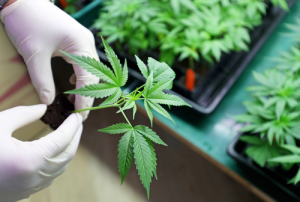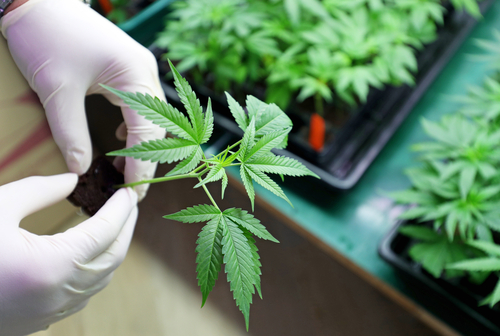Worldwide, Parkinson’s disease (PD) affects over ten million people. Since the endocannabinoid system has been linked to insomnia, motor coordination, anxiety, tremors, and depression, seem to affect the neurotransmitter levels of dopamine. Parkinson’s disease is a progressive condition involving the loss of muscle coordination and difficulty in moving.

This is due partly to a decrease in dopamine neurons. While there no cure currently available, there are traditional medical drug treatments designed to replace dopamine by various mechanisms of action. However, with these medications, side effects can occur, in particular, l-dopa induced dyskinesias or LIDs.
Dyskinesia is a syndrome that includes symptoms of tics and the inability to perform voluntary actions effectively. If a CB-2 agonist or stimulator can elevate the levels of dopamine, in theory, it could offer hope to individuals locked in a body that does not respond to their movement.
voluntary actions effectively. If a CB-2 agonist or stimulator can elevate the levels of dopamine, in theory, it could offer hope to individuals locked in a body that does not respond to their movement.
Early investigations are observing and accumulating data that may prove valuable. Researchers are looking into cannabinoids(EB, Russo) and the relationship it may play as a treatment for Parkinson’s. Presently, several mouse investigations are studying the effects on involuntary movements. (Rentsch, Peggy, et al.)
So far, study results demonstrate an influence in experimental mice that reduces the severity of LIDS when administering the CB-2 agonist known as HU-308. Repeated trials appeared to display a dose-dependent link.
The drug amantadine is a conventional medication used to treat the symptoms of Parkinson’s’. When used together with HU-309, their combined anti-dyskinetic effect seems to support the theory of drug cooperation. In addition, in the mouse model, HU-308 and amantadine seemed to lessen the body’s neuroinflammatory response. Provided the CB-2 agonist, HU-308, is safe and effective, the combination can potentially minimize the adverse effects of other Parkinson’s drug therapies.
Also, while HU-308 and amantadine showed an anti-inflammatory effect, their combination did not cause and enhanced effect.
At present, the studies gather important information and data that is constructive. A significant advantage is that the positive anti-dyskinetic effects were not accidental. There is some type of relationship. However, there are shortcomings in the clinical trials. These include separating the sexes of the mice, the strains and varieties of CBD, and the aspect of dosage.
Yet, as with all research, the planted seed can sprout with the necessary time, interest, and investment capital to determine CBD’s ultimate role in the treatment of Parkinson’s.
References:
- EB, Russo, Cannabis Therapeutics and the Future of Neurology, 2018. https://www.ncbi.nlm.nih.gov/pubmed/30405366
- Rentsch, Peggy, et al, Targeting the cannabinoid receptor CB2 in a mouse model of l-dopa induced dyskinesia, 2019. https://www.sciencedirect.com/science/article/pii/S0969996119303213?via%3Dihub
- S, Chayasirisobhon, Cannabis and Neuropsychiatric Disorders: An Updated Review, 2019.
- Image Credit: Parkinson’s News Today




